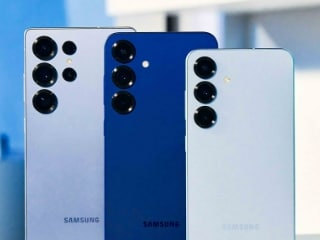- Home
- Science
- Science News
- NASA Helped by 17 Year Old Intern to Find Planet in Habitable Zone
NASA Helped by 17-Year-Old Intern to Find Planet in Habitable Zone
His job was to examine variations in star brightness captured by NASA's TESS planet hunter.

Photo Credit: YouTube / NBC New York
17-year old Cukier helped NASA discover its first Earth-size planet in its star's habitable-zone
Just three days into his internship, little did 17-year-old Wolf Cukier realise that he is going to make history -- in helping NASA discover its first Earth-size planet resting in its star's habitable-zone -- the way our Earth rests in its Goldilocks zone.
In 2019, when Cukier finished his junior year at Scarsdale High School in New York, he joined NASA's Goddard Space Flight Center in Greenbelt, Maryland, as a summer intern.
His job was to examine variations in star brightness captured by NASA's Transiting Exoplanet Survey Satellite (TESS) and uploaded to the Planet Hunters TESS citizen science project.
"I was looking through the data for everything the volunteers had flagged as an eclipsing binary, a system where two stars circle around each other and from our view eclipse each other every orbit," Cukier said.
"About three days into my internship, I saw a signal from a system called TOI 1338. At first I thought it was a stellar eclipse, but the timing was wrong. It turned out to be a planet," he said in a NASA statement.
NASA last week announced that its Transiting Exoplanet Survey Satellite (TESS) found a planet in a habitable zone, the range of distances where conditions may be just right to allow the presence of liquid water on the surface.
"I noticed a dip, or a transit, from the TOI 1338 system, and that was the first signal of a planet," Cukier told NBC 4 New York.
According to NASA, TOI 1338 b is 6.9 times larger than Earth and is located about 1,300 light-years away from Earth.
The planet orbits in almost exactly the same plane as the stars, so it experiences regular stellar eclipses.
A paper, which Cukier co-authored along with scientists from Goddard, San Diego State University, the University of Chicago and other institutions, has been submitted to a scientific journal.
Meanwhile, Cukier is now planning about his future in college.
"My top three choices are Princeton, MIT and Stanford," he told News 12.
Catch the latest from the Consumer Electronics Show on Gadgets 360, at our CES 2026 hub.
Related Stories
- Samsung Galaxy Unpacked 2025
- ChatGPT
- Redmi Note 14 Pro+
- iPhone 16
- Apple Vision Pro
- Oneplus 12
- OnePlus Nord CE 3 Lite 5G
- iPhone 13
- Xiaomi 14 Pro
- Oppo Find N3
- Tecno Spark Go (2023)
- Realme V30
- Best Phones Under 25000
- Samsung Galaxy S24 Series
- Cryptocurrency
- iQoo 12
- Samsung Galaxy S24 Ultra
- Giottus
- Samsung Galaxy Z Flip 5
- Apple 'Scary Fast'
- Housefull 5
- GoPro Hero 12 Black Review
- Invincible Season 2
- JioGlass
- HD Ready TV
- Laptop Under 50000
- Smartwatch Under 10000
- Latest Mobile Phones
- Compare Phones
- OPPO Reno 15 Pro Max
- Honor Win RT
- Honor Win
- Xiaomi 17 Ultra Leica Edition
- Xiaomi 17 Ultra
- Huawei Nova 15
- Huawei Nova 15 Pro
- Huawei Nova 15 Ultra
- Asus ProArt P16
- MacBook Pro 14-inch (M5, 2025)
- OPPO Pad Air 5
- Huawei MatePad 11.5 (2026)
- Xiaomi Watch 5
- Huawei Watch 10th Anniversary Edition
- Acerpure Nitro Z Series 100-inch QLED TV
- Samsung 43 Inch LED Ultra HD (4K) Smart TV (UA43UE81AFULXL)
- Asus ROG Ally
- Nintendo Switch Lite
- Haier 1.6 Ton 5 Star Inverter Split AC (HSU19G-MZAID5BN-INV)
- Haier 1.6 Ton 5 Star Inverter Split AC (HSU19G-MZAIM5BN-INV)

















